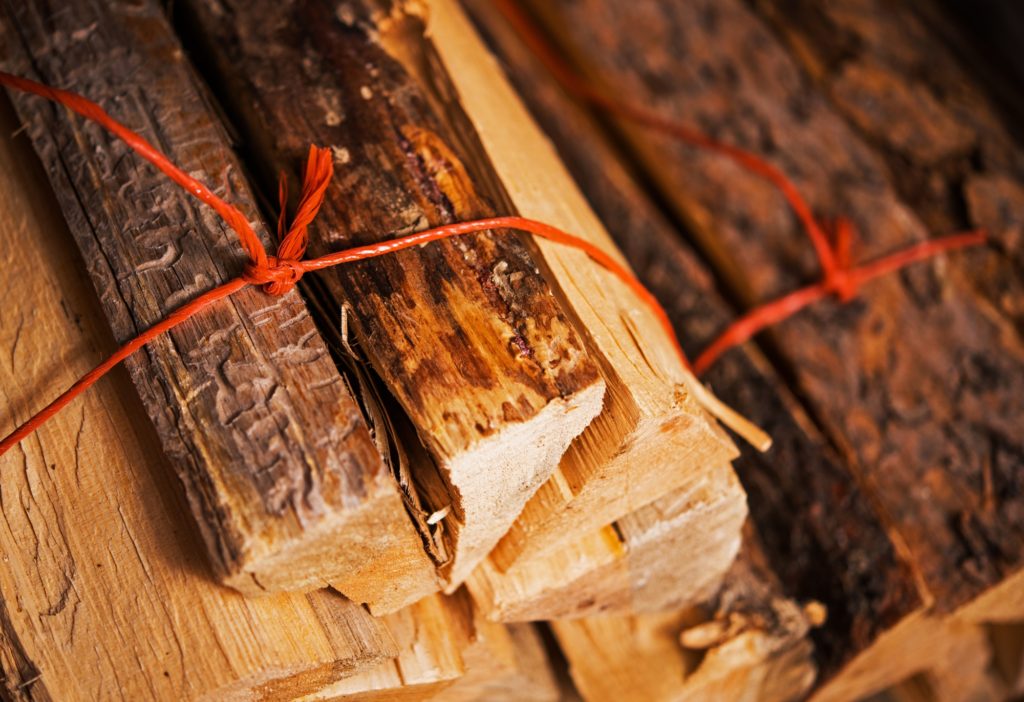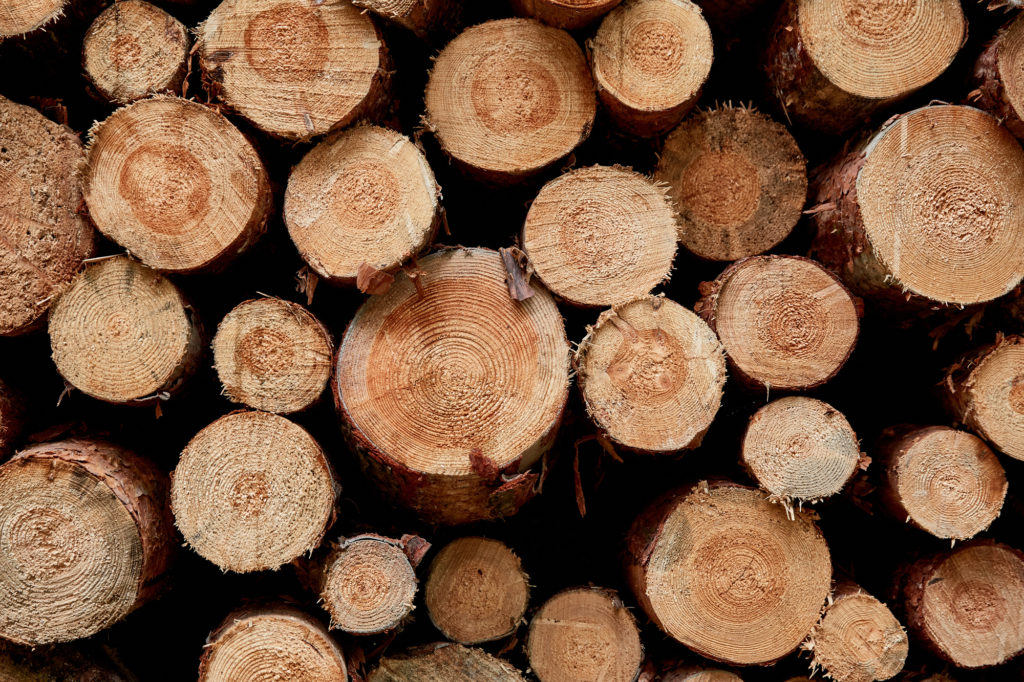Everything you need to know about firewood
Selecting the right firewood is a critical part of using your wood-burning fireplace. Choosing the right firewood involves more than using any piece of wood that you find. It is essential to know that there are many different types of wood, and each has its unique qualities. This blog will take about everything you need to know about firewood and how to choose the right wood for your fireplace.
How is firewood sold?
Firewood suppliers have a unique system for measuring firewood. Firewood is usually sold in cords or bundles.
What is a cord?
A cord of wood is a stack measuring 4 feet wide x 4 feet high by 8 feet long, containing 128 cubic feet or 16 “face” cubic feet. Most firewood suppliers will also offer firewood in ½ or ¼ cord quantities.
What is a firewood bundle?

A bundle of firewood is typically .75 cu ft. Bundles are most often found at home improvement stores and grocery stores. Due to their small size, bundles are most often purchased for short-term use.
Always Use Seasoned Firewood
Seasoned firewood is wood that has been dried to the point that it has a moisture content below 20 percent. The most common method of seasoning firewood is storing it in a dry place until it has reached the desired moisture level. It typically takes at least six months for firewood to be properly seasoned. Then, a firewood delivery service usually delivers seasoned firewood.
Kiln Dried Firewood
Another method for seasoning wood is drying the wood in a kiln. Kiln-dried firewood is baked in a kiln. The heat in the kiln removes the moisture from the wood. The high heat used during the kiln drying process rapidly reduces the time required for the wood to be seasoned. A fresh-cut piece of wood can be dried to a moisture content below 20% within about 10 hours.
Advantages of kiln-dried firewood
- Easy to light
- Burns with the least amount of smoke
- Burns hotter than air seasoned firewood
- Less likely to have insects or mold
- It can be used quickly
While kiln-dried firewood has many advantages over air-dried firewood, those advantages come at a cost. Kiln-dried firewood costs anywhere from 25-35% more than air-dried firewood. Kiln-dried firewood is most often sold in small bundles at local hardware stores. There are very few wood delivery services that offer kiln-dried firewood.
Green firewood (Wet wood)
Green firewood refers to firewood that has a moisture content above 20%. It is most often cut relatively recently. Buying green firewood is not necessarily a bad thing as long as you let it sit long enough to be properly seasoned. This starts with knowing if the firewood is seasoned. Unfortunately, some less than reputable firewood delivery companies will sell green firewood without informing the customer that is the case. The best way to know if your firewood is seasoned correctly is by using a wood moisture meter.
Hardwoods vs. softwood

The tree species has a significant effect on the characteristics of the firewood. Wood species are generally considered to be hardwood or softwood. Hardwoods consist of species that are dense and contain less sap than softwoods. Softwood contains more sap making it create more smoke and less heat. Therefore, you should never burn softwood in your fireplace.
Hardwoods
- Alder
- Ash
- Aspen
- Beech
- Birch
- Cottonwood
- Elm
- Apple
- Cherry
- Hickory
- Ironwood
- Maple
- Mesquite
- Oak
Softwoods
- Cedar
- Fir
- Hemlock
- Pine
- Redwood
- Spruce
- Tamarack/Larch
It is essential to keep in mind that all hardwoods are not created equal. They are all the better than softwoods. However, there are significant differences between the amount of fuel generated by different hardwood species. For example, one cord of white oak generates 200-250 gallons of fuel oil. One cord of black cherry generates 150-200 gallons of fuel oil.
Best hardwood to use in your fireplace
- Oak
- Apple
- Maple
- Ash
- Mesquite
- Ironwood
- Birch
Things that you should never burn in your fireplace
Some frugal homeowners try to source their firewood. You can collect your firewood. However, you should be very careful when choosing what will burn in your fireplace. Burning the wrong things in your fireplace can put your health at risk and cause chimney problems.
Pressure-treated wood
Pressure-treated wood is treated with chemicals that prevent it from rotting in the elements. These chemicals are fine when used outside for a fence, deck, or outdoor furniture. Unfortunately, the chemicals that prevent rot can cause serious health problems if they are burned.
Softwoods
Do not use softwoods like pine, fir, spruce, or other coniferous wood. Softwoods tend to produce more smoke and soot—the increased smoke results in less heat for your home. The soot is a cause for more significant concern. The soot from softwoods creates more creosote in your chimney. Creosote buildup is the most common cause of chimney fires.
Green or wet wood
Burning green wood or wet wood has the same issues as burning softwoods. There’s a lot of smoke, less heat, and plenty of soot in your chimney. It’s best to allow time for the wood to season. Additionally, its always recommended to have your chimney regularly swept and inspected
Painted or stained wood
You have painted or stained wood present health concerns similar to those presented by pressure-treated wood. Never burn painted, stained, or clear-coated wood. The paint and coatings emit toxic fumes when burned. You should also avoid burning plywood, particleboard, and pressed wood products for the same reasons.
Burning garbage or cardboard
Garbage items like plastic, paper, or cardboard should all be avoided. All of the aforementioned materials can pose a health risk due to toxic fumes.
In this article, we’ve talked about the best types of firewood for your chimney and which ones you should avoid. The most important takeaway from this article is that you should only burn seasoned wood in your fireplace. Burning anything else is dangerous.
